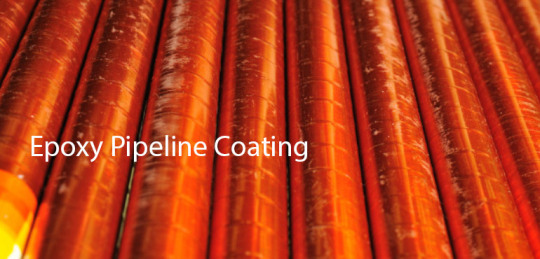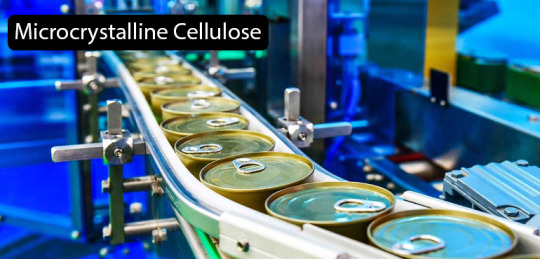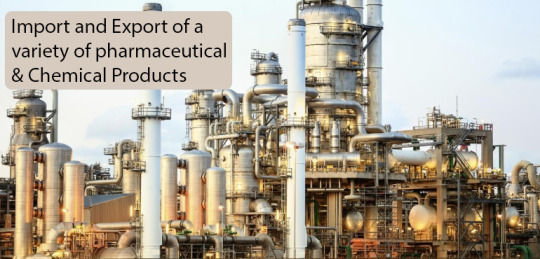Don't wanna be here? Send us removal request.
Link
High-Performance protective Epoxy Flooring Coating for the Industry. Markskill is leading supplier for Epoxy Curing Agent and Pharmaceutical products all over the world.
0 notes
Text
Food Colors and their importance

FOOD is a source of energy and to sustain we need food. Colors are an inseparable part of food. We cannot think of food without color. Any dye, pigment or substance which is added to food items— solid or liquid—imparting the desired color, is referred to as food coloring. A food coloring agent can be available in various forms such as solid powders, liquid, viscous like gel or pastes. It can be of two types based on its sources
(a) Natural colour and (b) synthetic or artificial colour.
Natural food color is good for health. Need for addition of color to food Make food more attractive and informative as that helps the consumers to identify their desired food products. Also make food more appetizing.
Food colors influence appetite and choice of food. Offsetting color loss due to light, air, extremes of temperature, moisture, and storage conditions, masking natural variations in color, enhancing naturally occurring colors, and providing identity to foods are all essential in the quest to make food attractive and informative.
Protecting flavors and vitamins from damage by light, ensuring a certain quality for decorative or artistic purposes and increasing appetite appeal, making less desirable food more desirable, masking defects, and keeping certain foods tasting fresher for long time are also key
· Natural color of food - Indication
It may indicate degree of sweetness, degree of ripeness or decay, type of flavour, types of fruits or vegetables, and visual information about phytochemical properties that are good for health.
· Natural coloring agent
Annatto (E160b), a reddish-orange dye made from the seed of the achiote Betanin (E162) extracted from beets Butterfly pea; a blue food dye Caramel colouring (E150a-d) made from caramelised sugar Chlorophyllin (E140); a green dye made from chlorella algae Elderberry juice .Lycopene (E160d) Carmine (E120); a red dye derived from the cochineal insect, Dactylopius coccus Pandan (Pandanus amaryllifolius); a green food colouring Paprika (E160c) Turmeric (curcuminoids, E100) Saffron (carotenoids, E160a).
· Artificial colouring agent
Food colouring agents, food colourants, colourants, colour additives, and food dyes are any dye, pigment or substance that can impart colour, alone or through reaction with other substances, when added or applied to a food, drug, cosmetics or to the human body.
The natural colours from plant, animal and mineral sources had been used but due to economic interest, manufacturers had popularised more artificial colours. Aniline was the first petroleum product that is a toxic compound from which several chemically synthesised colours were derived. Basically starting materials were obtained from coal tar of bituminous coal and which were very toxic to health. Artificially synthesised colours are less costly to produce, and are attractive in colouring properties, highly concentrated, and they are widely available and have been used in food, paint, coating, textile and plastics industries. Azo-dyes is another variety of synthetic colours. In this dye, colour can be controlled selecting the number of azo-groups and various substituents. A blue achieved by replacing the aniline derivate with benzidine derivate and red colours by reaction between aniline derivatives (diazo) with a naphthol derivate.
· Conclusion
Colouring agent in food has an important role. Without colour we cannot imagine food or its item. Colour makes food and its items very attractive and appealing to taste. Natural Food Colours are good for health whereas use of chemically synthesised arterial colour is not very good for health and their use should be controlled fully by laws by government. Wherever there is use of artificial colour in food they should be mentioned on the container properly in labelling. Manufacturing companies and industries should strictly follow the guidelines in food laws to ensure the safety and health of the general public.
Tags:
Adhesive for Constructions
Concrete Floor Coatings
Marine and Protective Coatings
#Epoxy Curing Agent#Epoxy Hardener#Marine and Protective Coatings#Concrete Floor Coatings#Specialty Coating Applications#Adhesive for Construction#Construction Chemicals#Phenalkamine#Phenalkamine Adduct#Phenalkamide#Microcrystalline Cellulose#Pharmaceutical Excipients#Anti-Caking Agent#Stabilizer#Texture Modifier#Suspending Agent#Thickeners#Binders
0 notes
Text
FOOD COLOURS

Food coloring, or color additive, is any dye, pigment or substance that imparts color when it is added to food or drink. They come in many forms consisting of liquids, powders, gels, and pastes. Food coloring is used both in commercial food production and in domestic cooking.
But why is colour added in foods?
Foods without colours are generally considered inferior in quality which is why colours are added to make them look attractive
Food colours can also protect vitamins and flavors that may be affected by sunlight during storage and increase the shelf life of the product.
By using Food Colours, we can enhance the natural colour of the dish and introduce decorative colours to other foods.
Colour of the food can affect your perception of food
Type of food colours:
Food colorings are of two sorts: Artificial and Natural. Not surprisingly, natural colours are a superior option as they are entirely derived from plants. Normal coloring generally appears less vibrant when contrasted with artificial coloring. This however, does not make a difference in the flavor of your food.
While many of us like to believe that we are not easily deceived, our sense of taste is often fooled by our sense of sight. This is because we humans have certain ‘Expectations’ of how food should look. When a food’s color is off or is different than what we expect, our brain tells us that it tastes different too. Long supported by scientific studies, we use visual cues from color to identify and judge the quality and taste of what we eat.
We bet none of you have thought about how colors affect the way we feel about the food we eat, Have you? Color psychology has been used in marketing for a long time now. For example – Most fast food chains will preferably use Red colour followed by Yellow and Orange. Yellow and orange are colors that make people feel hungry. The color red is associated with emotion and passion. So when one sees red combined with yellow and orange, they become passionately hungry.
How about you? Do colors make you most hungry?
Here at Markskill we distinctively supply selective scope of food colours like natural chemicals such as carotenoids a dark red, yellow and orange colors can be obtained. These colors are water-soluble dyes, which are widely used in the pharmaceutical and food industries. They are also used in bakery, cakes and candies, biscuits, cereals, soft drinks, beverages, jams, jellies, custards, pudding powder, and cherry dyeing, Ketchup sauces and other canned food, soda water. These colours are fabricated utilizing the best quality clean hygienic ingredients and excellent quality raw materials.
Marine and Protective Coatings
Adhesive for Construction
#Epoxy Curing Agent#Epoxy Hardener#Marine and Protective Coatings#Concrete Floor Coatings#Adhesive for Construction#Construction Chemicals#Phenalkamine#Phenalkamide#MCC#High Purity Cellulose#Anti-Caking Agent#Stabilizer#Texture Modifier#Thickeners#Binders
0 notes
Text
Suspending agent excipients

Suspending agent excipients help active pharmaceutical ingredients stay suspended in the formulation and prevent caking at the bottom of the container. One of the properties of a well-formulated suspension are that it can be easily re-suspended by the use of moderate agitation or shaking.
Markskill specializes in providing the top suspending/thickening agents if you want more information on the product, grade, or form of the suspending / thickening agent you require, just contact our excipient chemical specialist.
Most suspending agents perform two functions. Besides acting as a suspending agent them also impart viscosity to the solution. Suspending agents form film around the particle and decrease interparticle attraction. Suspending agents also act as thickening agents. They increase in viscosity of the solution, which is necessary to prevent sedimentation of the suspended particles.
A good suspension should have well-developed thixotropy. At rest, the solution is sufficiently viscous to prevent sedimentation and thus aggregation or caking of the particles. When agitation is applied the viscosity is reduced and provide good flow characteristic from the mouth of the bottle.
A pharmaceutical suspension, like other, disperse systems, is thermodynamically unstable, thus, making it necessary to include in the dosage form, a stabilizer or suspending the agent which reduces the rate of settling and permits easy redispersion of any settled particulate matter both by protective colloidal action and by increasing the consistency of the suspending medium. Suspending agents are (i) inorganic materials, (ii) synthetic compounds, or (iii) polysaccharides.
Microcrystalline cellulose
#Epoxy Curing Agent#Epoxy Hardener#Marine and Protective Coatings#Concrete Floor Coatings#Specialty Coating Applications#Adhesive for Construction#Phenalkamine#Phenalkamine Adduct#Phenalkamide#Microcrystalline Cellulose#MCC#High Purity Cellulose#Pharmaceutical Excipients#Anti-Caking Agent#Stabilizer#Texture Modifier#Suspending Agent#Thickeners#Binders
0 notes
Text
CONSTRUCTION ADHESIVES & SEALANTS

Phenalkamines cure fast at room and low temperatures and have outstanding mechanical properties. Fast bond strength development at low temperatures makes phenalkamine suitable for year-round construction and building adhesives such as grouts, concrete patching compounds, rapid set repair, and maintenance adhesives. These products also offer epoxy construction and building adhesives with the excellent mechanical strength and high Tg required to withstand external stresses during service.
Adhesive materials are exposed to moisture at all times. Absorption of moisture by adhesives can weaken their strength and ultimately result in failure of the material. The phenalkamines provide outstanding moisture resistance and surface tolerance for wet substrates, which is an inherent benefit of CNSL technology that ensures structural bonds stay strong throughout the lifetime of the adhesive.
Phenalkamides also offers excellent properties as adhesives because they delivers fast bond-strength development combined with excellent mechanical properties such as high tensile, flexural, and compressive strength. Adhesives based on Phenalkamides give longer pot-life with extended pot life and outstanding bond strengths to various substrates. They also provide good Tg compare to phenalkamines.
Acrylic polymer emulsions for flooring applications can help you formulate products that exhibit:
Strong adhesion to a variety of substrates
Good peel adhesion
Shear stability
A range of economical dispersion-based to high-end cementitious adhesives and grouts deliver:
Very good slip resistance
High water retention
Improved wetting
Long open time
For industrial applications requiring exceptional performance, polyurethane materials deliver adhesive solutions with:
Excellent flexibility
Outstanding bond strength
Fast curing
Whether your needs include sealants that offer a fast cure, excellent flexibility, superior bond strength, outstanding elastic recovery or low shrinkage, our cellulose ethers, acrylic polymer emulsions, polyurethanes, and silicones can help you formulate a sustainable product to meet even the most challenging requirements.
These sealants include:
Cellulose ethers that deliver improved aesthetics and weatherability
Acrylic polymer emulsions for all-purpose and pigmented caulks and sealants – with reduced dirt pickup, mildew growth and paint discoloration
Polyurethanes for demanding construction and industrial applications
Silicones for easy application in cold weather, UV and weather resistance, and durability
CONSTRUCTION ADHESIVES & SEALANTS
#Epoxy Curing Agent#Epoxy Hardener#Marine and Protective Coatings#Concrete Floor Coatings#Construction Chemicals#Phenalkamine Adduct#MCC#Stabilizer#Suspending Agent#Thickeners#Binders
0 notes
Text
Epoxy Pipeline Coating

Pipe Line Coating have Undergone dramatic technological Changes. Coating now must be able to be applied in the field or at operating site, must not be damaged in handling during Construction or in operation by soil stress or soil movement. It must provide exceptional corrosion protection.
Epoxy system must be developed which can be operative up to 150˚c temperature.
Additionally epoxy technology must allow to be applied on wet surfaces and to bond to subsequent coats like Polyurethane coating systems.
Advantages of Markskill‘s Phenalkamine for Pipe Coating:
Fast curing with workable pot life.
Suitable viscosity for pipe coating application.
Excellent bonding with base metal and subsequent coating.
Some of the products are approved for potable water usage.
Thermal shock stable.
From protecting pipelines to sealing warehouse floors, an epoxy surface coating protects surfaces strengthens materials and protects them from corrosion and decay, making epoxy one of the most widely used industrial finishes. While epoxy coatings may initially cost more than other types of surface coating materials, its ability to provide superior and durable corrosion resistance, adhesion and flexibility to a variety surfaces ultimately makes it a more economical choice, as the need to reapply the coating may be less frequent when materials are prepared well.
Epoxy coatings require specific environmental conditions to ensure the success of their application, as well as the proper preparation of the respective surfaces. When applying an epoxy coating to steel, for instance, you may need to remove the thin corrosion layer that naturally forms on the surface. Methods of cleaning surfaces include the use of chemicals or blasting products.
After you prepare and clean a surface, it becomes vulnerable to environmental contamination. When working with steel, for example, it takes as little as 30 minutes for flash rust to form. The longer you wait to apply an epoxy surface coating, the shorter the expected field longevity becomes. For this reason, manufacturers provide specific instructions regarding how quickly to apply the first coating and the ideal environmental conditions.
Tag:
Marine and Protective Coatings
Microcrystalline cellulose
Pharmaceutical excipients
#Binders#Thickeners#Suspending Agent#Stabilizer#High Purity Cellulose#MCC#Microcrystalline Cellulose#Phenalkamide#Phenalkamine Adduct#Phenalkamine#Adhesive for Construction
0 notes
Text
How Microcrystalline Cellulose is used in Food Industry

Microcrystalline Cellulose (MCC) is a term for refined wood pulp. It has applications as a texturizer, an anti-caking agent, a fat substitute, an emulsifier, an extender, and a bulking agent in food production. The most common form is used in vitamin supplements or tablets.
We contract manufacturer Microcrystalline Cellulose (MCC) at the state of the art facility, which has US FDA and other required licenses. We are also authorized representative of the manufacturer of the raw material required to manufacture MCC. Our products meet international standards of quality
The composition of MCC has glucose units connected by a 1-4 beta glycosidic bond and considered to be naturally occurring polymer. These linear cellulose chains bundled together as microfibrilspiralled together in the walls of the plant cell. Each microfibril exhibits a high degree of three-dimensional internal bonding resulting in a crystalline structure that is insoluble in water and resistant to reagents. There are, however, relatively weak segments of the microfibril with weaker internal bonding. These are called amorphous regions; some argue that they are more accurately called dislocations because of the single-phase structure of microfibrils. The crystalline region is isolated to produce microcrystalline cellulose.
Functions and Benefits in Bakery products:
· Increases bake stability and maintain freshness
· Prevent the separation of water and oil
· In dry mixing, improve the flow property
· Calorie reduction
Functions and Benefits in Cheese:
· Caking is prevented & Processing is made easier
· Fibre content is increased & Calories value is reduced
· Improve creaminess
Functions and Benefits in Ice cream
· Controlling the ice crystal growth
· Reduces calories
Functions and Benefits in Chocolate Drinks
· Increase high-temperature processing stability
· Increase the robust holding capacity of the suspension
· Adds creaminess & opacity
Functions and Benefits in Sauces
· Increase the stability of the emulsion
· Improve cling
· Improve heat stability
Functions and Benefits in Salad Dressings
· Increase the stability of the emulsion
· Improve cling
· Improve heat stability
Functions and Benefits in Juices
· Suspending agent
· Enhance the mouthfeel characteristics
· Reduces calories
There are plenty of other applications Microcrystalline Cellulose has, check out how our experts can help you find a suitable solution for your need.
Tag:
Marine and Protective Coatings
Pharmaceutical excipients
#Epoxy Curing Agent#Epoxy Hardener#Marine and Protective Coatings#Concrete Floor Coatings#Adhesive for Construction#Microcrystalline Cellulose#MCC#Phenalkamide#Pharmaceutical Excipients#Stabilizer#Suspending Agent#Binders
0 notes
Text
Best Marine Coating Products - Phenalkamine curing agents

Shipyard paint decks, ballast tanks, superstructures above water and under water parts are exposed under aggressive conditions. Marine Coatings formulators are also challenged by environmental issues. There is also the need to reduce cost of application without losing quality. Phenalkamine are used as universal primers for all the parts of ships which saves cost and reduces complexity of application.
We work closely with our global customer base to get a better understanding of their requirements and can thus deliver effective solutions. Due to extensive research and customer centric approach we have been able to develop market-leading marine coatings using sustainable advances and innovations to maximize our customers’ return on investment.
Our global operations and trusted products enable us to anticipate and meet the challenges of the worldwide coatings industry, making us a reliable business partner. Our Marine Coatings are meant for new-build vessels, dry dock situations, inland marine applications and maintenance done at sea. We employ break-through technology, eliminating slime problems and boosting fuel savings. This improves operational effectiveness and profitability of the vessel.
With Marine Coating, for the protection of Ships, heavy duty and general industrial protective coating are required. Phenalkamine curing agents are strong contenders to meet these demanding requirement.
Phenalkamine primers show excellent anti corrosion properties compared to conventional polyamide technology. Salt spray test after 750 hours are compared with polyamide.Markskill’s Phenalkamine curing agents formulates antifouling coating with epoxy systems there by reduces fuel consumptions of ships.
Advantages of Markskill’s Phenalkamine curing agents for Marine Coating
· Fast and low temperature cure with workable pot life.
· Provides better anticorrosive coatings on ballast tanks by repelling water from the coated surfaces.
· Very low VOC formulations.
· Replacement of coal tar epoxies.
· Cost effective coatings.
· Provide antifouling coatings for further cost reduction.
Contact our team at Markskill or write to us at [email protected] for your requirements.
Tags :
Epoxy curing agent
Marine and Protective Coatings
Microcrystalline cellulose
Pharmaceutical excipients
#Epoxy Curing Agent#Epoxy Hardener#Marine and Protective Coatings#Concrete Floor Coatings#Specialty Coating Applications#Construction Chemicals#Phenalkamine#Phenalkamine Adduct#Phenalkamide#Microcrystalline Cellulose#MCC#High Purity Cellulose#Stabilizer#Suspending Aagent#Binders#Thickeners
0 notes
Text
Why Floor Coating is so much important?

There are a variety of applications for epoxy-based materials in market that includes coatings, adhesives and the creation of composite materials. It is important to know that the materials used for surface coatings are known for their good mechanical properties, electrical insulating properties, adhesion, and chemical- and heat-resistance.
From protecting pipelines to sealing warehouse floors, an epoxy surface coating protects surfaces strengthens materials and protects them from corrosion and decay, making epoxy one of the most widely used industrial finishes.
While epoxy coatings may initially cost more than other types of surface Coating Materials, its ability to provide superior and durable corrosion resistance, adhesion and flexibility to a variety surfaces ultimately makes it a more economical choice, as the need to reapply the coating may be less frequent when materials are prepared well.
There are different types of systems used for floor coating and most of them work well if the surface is properly prepared for the coatings. But today’s major problem is preparation of the surface before coating. Phenalkamines works well when they are used as curing agents made with epoxy system for primer coat. On the moist concrete too.
The role of primer is to protect the surface and also to give good bonding between moist surface to primer coat and primer coat to topcoat. Phenalkamine due to chemical structure provides very good adhesion on the moist surface and also it allows the topcoat to bond well with primer. For any primer coating two important criteria are sealing and adhesion, phenalkamine cured with epoxy resin primer provides both the advantages. Top of it they also provide added advantage of 100% solid content.
When phenalkamine based primer was applied on wet concrete surface and pull of test was done after 7 days of coating the high cohesive strength was found. Also when primer was applied on damp or humid surface no blistering was found on the surface of the coatings. This shows that phenalkamines are not humidity sensitive. In normal case the primer coating is done on green concrete (wet concrete) after 28 days of drying, but in case of phenalkamines you can coat primer immediately, thereby saving the time of floor coating.
Epoxy Surface Coating Considerations
Epoxy coatings require specific environmental conditions to ensure the success of their application, as well as the proper preparation of the respective surfaces. When applying an epoxy coating to steel, for instance, you may need to remove the thin corrosion layer that naturally forms on the surface. Methods of cleaning surfaces include the use of chemicals or blasting products.
After you prepare and clean a surface, it becomes vulnerable to environmental contamination. When working with steel, for example, it takes as little as 30 minutes for flash rust to form. The longer you wait to apply an epoxy surface coating, the shorter the expected field longevity becomes. For this reason, manufacturers provide specific instructions regarding how quickly to apply the first coating and the ideal environmental conditions.
The success of a protective epoxy coating depends on the surface’s cleaning and preparation, as well as the ambient conditions to which the surface is exposed during the preparation, application and curing periods. When a controlled environment, such as a factory, isn’t available, professionals look to temporary climate control solutions to create the ideal ambient conditions for every step of the epoxy surface coating process. From shipyards to power plants to construction sites, Contact Markskill to learn more about floor coating solutions.
Tags :
Epoxy curing agent
Marine and Protective Coatings
Microcrystalline cellulose
Pharmaceutical excipients
#Epoxy curing agent#Epoxy hardener#Concrete Floor Coatings#Adhesive for Construction#Phenalkamine#Phenalkamide#Phenalkamine adduct#Microcrystalline cellulose#MCC#High Purity Cellulose#Pharmaceutical excipients#Anti-caking agent#Stabilizer#Texture modifier#Suspending agent#Thickeners
0 notes
Text
Markskill – Importer & Exporter of a Variety of Pharmaceutical & Chemical Products

We are in the business of creating the values for our customers and ourselves. We represent over 25 manufactures from Japan, China, Korea, Vietnam, India, Israel, and the USA in Chemicals, Pharmaceuticals, and renewable energy products.
Our product ranges are Bulk Drugs, Drugs -intermediates, Excipients, Specialty chemicals, Paint chemicals, and Renewable products such as solar panels.
Our core competency is in having an excellent established network of suppliers and buyers across the globe that is committed to maintaining high-performance standards. Accompanied by our goodwill, knowledge of various products and expertise in dealing facilitate us to procure the right product at the right time with competitive price and quality.
Valued to the core.
At Markskill, we have implanted high values in what we think and do.
People are our greatest assets, and each of our team members is unique and valued. The team is passionate, innovative, and full of entrepreneurship. We encourage free-thinking, thinking differently, and experimenting. The core values taught in the organization and our investment in the group has inspired them to invest in quality output. The carefully selected team members with the right attitude always deliver products and services to exceed our customers’ expectations.
Work-life at Markskill is beyond description or explanation. It is something to be experienced and cherished. We encourage constant up-gradation and enhancement in the skills: knowledge and the services we offer. There are also fun activities to ease the senses and the mind.
Customer satisfaction and customer-centric approach are at the core of Markskill. We have high standards of customer-centric dealings. We continually strive to beat our records by exceeding customers’ expectations. We excel in delivering excellent quality products at the most competitive price. Our success rests on these standards and values we practice and teach in our team, products, and services.
Customer satisfaction at Markskill has stood the test of time. Our customer-centric approach has earned many repeats and long term customers. It is a matter of pride that most of our customers stay with us for years, and we cater to their needs every time with the same enthusiasm and focus.
At Markskill, we have successfully implanted the core values of:
· Customer satisfaction and customer focus dealings
· Diversity in business offerings
· Passionate, enthusiastic and dedicated team members
· Integrity in whatever we do think and do
· Having fun and enjoying what we do
Strategic Objectives
Our strategic objectives are not formed of high sounding words or complex jargon but on simple note of total customer satisfaction and customer-centric approach in all the dealings. We have been successful in retaining talents on board as well as retaining many good clients.
Customers are the partners of our success and we are happy to have quality customers and repeat customers in the years we have traveled in the trading industry.
We strive for:
· 100% transparency in all dealings and winning 100% trust of all the stakeholders we deal with.
· To cater to quality customers and retaining them with abundant goodwill.
· To develop and strengthen business relationships across the 5 continents.
Tags :
Epoxy curing agent
Marine and Protective Coatings
Microcrystalline Cellulose
1 note
·
View note